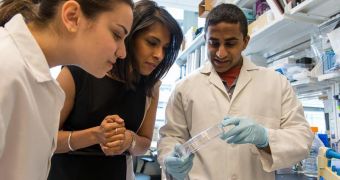3D printed organs are one of the major overarching goals of 3D bioprinting technology, replacement body parts that will not require someone else to donate a kidney or a piece of liver. There are some factors, however, that suggest 3D printed organs are more of a necessity than is outwardly apparent.
One of those factors is self-driving cars, as bizarre as it sounds. And we aren't joking. This is an issue raised by MakerBot founder Bre Pettis during a recent interview with Fortune.
Self-driving cars will eventually change modern-day society. And let's face it, no one is going to allow those things on the street until they prove at least as safe as the best of human drivers. This is expected to lead to much safer roads, with much fewer accidents than occuring right now.
This is good, no question. However, it is a very little advertised fact that fatalities resulting from car crashes are one of the major sources of donated organs.
Currently, someone sick or injured and in need of an organ transplant is placed on a waiting list until someone's life expires and the organ can be harvested from them.
With fewer people dying, the waiting lists will get longer and longer, until more people start dying from waiting too long.
It sounds morbid to say that car accidents are a major source of organ donations and the reason why other, completely unrelated people may survive, but that is the truth. So, with car accidents expected to drop, an alternative is needed.
Thus, 3D printed organ research and development might experience greater pressure, attention and, hopefully, funding than if driverless cars were not a factor.
We can safely say it is fortunate that development of such things has already begun. Sure, we are decades away from actual, complex prints, but 3D printed skin grafts, liver cells and even blood vessels have been successfully created.
If things go well, the science may be perfected to the point of human trials by the time driverless cars become ubiquitous around the world (and makes owning a driver's license unnecessary).
On the flip side, the opposite may happen and the field of 3D printed organs could only take off once self-driving cars hit the market. Just like electric vehicles and energy efficient supercomputers (and normal electronics for that matter) only started to get the attention they deserved only when fossil fuel reserves began to show signs of depletion.

 14 DAY TRIAL //
14 DAY TRIAL //